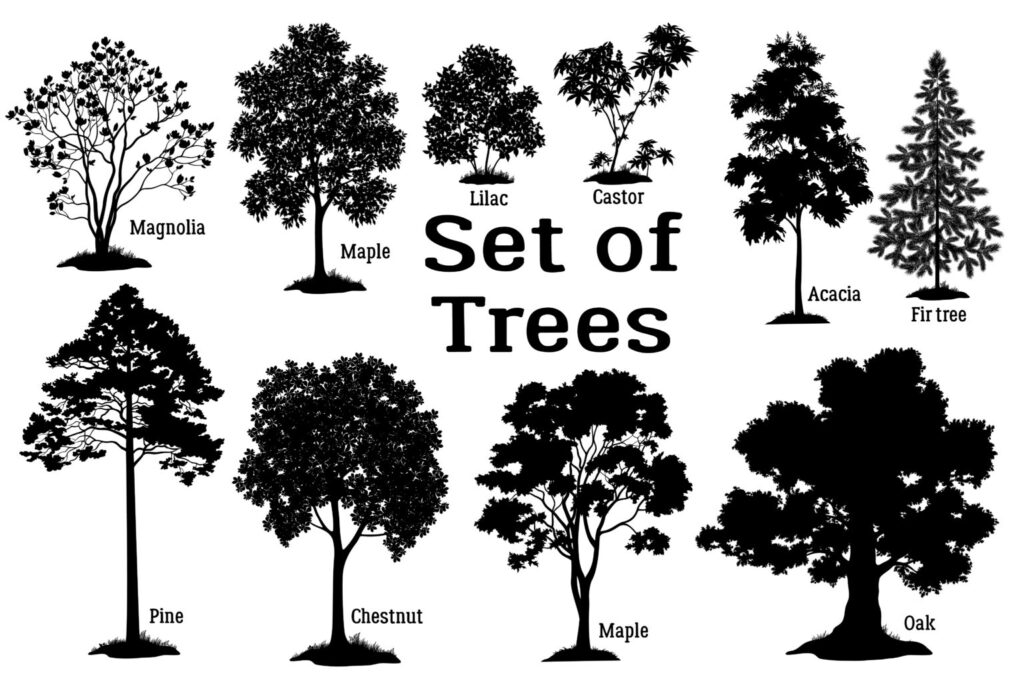Trees are not only vital components of our ecosystems but also sources of inspiration and utility in art and craftsmanship. With approximately 60,000 tree species identified worldwide, their diverse anatomical features—such as hardness, grain patterns, and texture—play a significant role in their selection for various artistic and functional applications.
The number of tree species and individuals per continent in the GFBI (Global Forest Biodiversity Initiative) database. This dataset (blue points in the central map) was used for the parametric estimation and merged with the TREECHANGE occurrence-based data (purple points in the central map) to provide the estimates in this study. Green areas represent the global tree cover. GFBI consists of abundance-based records of ∼38 million trees for 28,192 species. Depicted here are some of the most frequent species recorded in each continent. Some GFBI and TREECHANGE points may overlap in the map.
(https://www.pnas.org/doi/10.1073/pnas.2115329119)

Global Tree Diversity and Conservation Status
According to Botanic Gardens Conservation International (BGCI), there are about 60,000 tree species globally. However, recent assessments indicate that over one-third of these species are at risk of extinction, primarily due to deforestation, invasive species, diseases, and climate change.
Anatomical Characteristics of Select Tree Species
The intrinsic properties of wood, including hardness and grain structure, influence its suitability for different uses:
- Oak (Quercus spp.): Renowned for its strength and durability, oak possesses a prominent grain pattern, making it a favorite in furniture making and flooring. Its resilience has also led to its use in shipbuilding historically.
- Maple (Acer spp.): With a fine, consistent grain and considerable hardness, maple is commonly used in cabinetry and musical instruments. Its subtle grain makes it suitable for applications requiring a smooth finish.
- Walnut (Juglans spp.): Valued for its rich color and distinctive grain, walnut is often utilized in high-end furniture and veneers. Its workability and aesthetic appeal make it a prestigious choice among woodworkers.
- Poplar (Populus spp.): As a softer hardwood with a straight, uniform grain, poplar is easy to work with and is frequently used in painted furniture and interior trim. While not as prestigious as other hardwoods, its affordability and versatility are appreciated in various applications.
Cultural and Artistic Significance
The selection of wood species extends beyond physical properties, encompassing cultural and artistic considerations:
- Oak: Symbolizing strength and endurance, oak has been integral to European art and architecture. Ancient oaks, some over a thousand years old, are considered national treasures and are advocated to receive protections akin to listed buildings.
- Maple: In North America, maple is emblematic, notably represented on the Canadian flag. Its wood is prized in musical instrument making, particularly for violins and guitars, due to its tonal qualities.
- Walnut: Historically associated with luxury and craftsmanship, walnut has been a preferred material for intricate carvings and antique furniture in Europe and North America.
- Poplar: While considered a common wood, poplar has been used by renowned artists, including Leonardo da Vinci, who painted the “Mona Lisa” on a poplar panel.
Conservation Efforts and Sustainable Use
The alarming rate of tree species facing extinction underscores the need for robust conservation strategies. Initiatives such as the Global Tree Assessment aim to identify and protect threatened species, emphasizing the importance of trees in maintaining biodiversity and ecological balance.
Incorporating sustainable practices in forestry and wood utilization ensures that these valuable resources remain available for future generations. This includes responsible sourcing, supporting conservation programs, and fostering awareness about the ecological and cultural significance of diverse tree species.

Leave a Reply